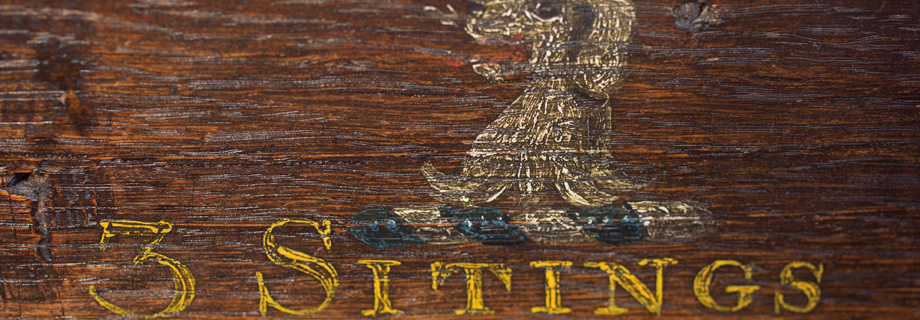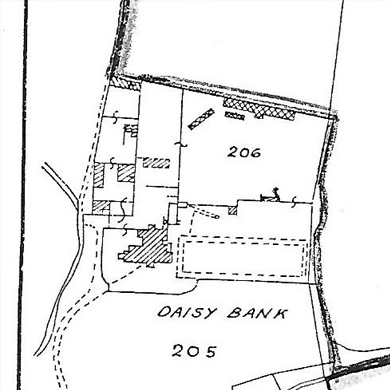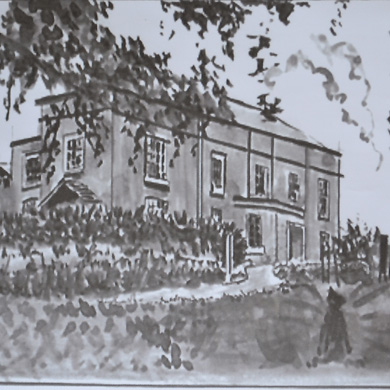Thomas Lowe
Sketch of Daisy Bank, by Frank Randell from a photo, 1992. By permission of Mr and Mrs C Worth.
Thomas Lowe was one of the five gentlemen among the twenty six petitioners in 1740 who wrote to the Bishop of Chester asking for permission to pull down the town chapel because it was too small, old and decayed. The bishop approved their application and by 1742 they had built as much of the new chapel as money allowed. Thomas Lowe and Richard Martin(Alderman) were appointed by the Corporation to manage very aspect of the rebuilding of the chapel, begun in 1741. In the new chapel Thomas Lowe had a vault dug where he and his family are buried.
He left a long and detailed will and inventory. Two significant points he made were his apology to his family for not leaving them much money as he had spent it on developing and increasing the value of their home at Daisy Bank House, (Now only remembered in the name of a housing estate next to the A 34.) and, as it seems, on his collections – medals, coins, books, instruments, pictures, little toys, rings, seals with coats of arms, a pair of pistols and curiosities – “which I have been long time at great pains & expense in collecting & picking up”. However, he left his dear wife not only their home but also five houses in West Street and a share in a rented property in Richmond, Yorkshire.
Secondly he made a clear testimony of his beliefs in his will:
“To me Christ is advantage both in Life and Death. I hope my life doth witness my religion, however let me give this testimony that I dye a true believing Protestant of the Church of England. Sincerely penetent for my Sins, comfortably assured by ffaith, That Christ Jesus has satisfied God`s Justice, and that I shall be made partaker of Eternall life. In this life I have found all worldly things but varying vanities and false joys, of by times I have had my portion. But I hope to meet with more permanent, certain and compleat hapiness now that I am going to meet my Saviour face to face.” He did not want an elaborate funeral, but a “decent” one because as he wrote “My body to the earth where it is, yet for the honour it once had as the Temple of the Holy Ghost, and the glory it shall have when it puts on Immortality.”
There is no visible monument or grave in the church for Thomas Lowe and his family. They are buried in their vault beneath the parquet flooring in the south east corner.


